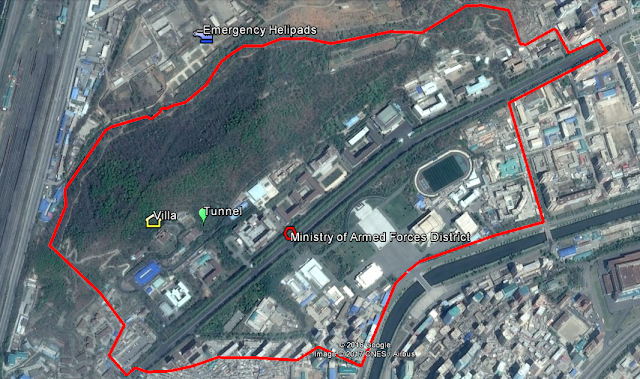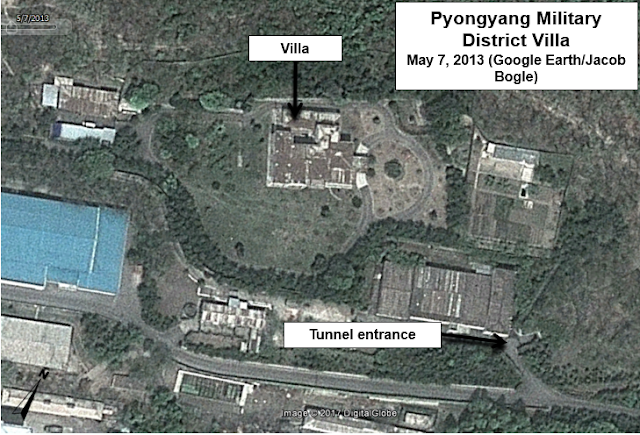Dan Mandis Show 99.7
WWTN, Nashville
6-20-17
12:35-12:55 CST
Why was Otto Warmbier
there and why does anybody still go to North Korea?
Otto was travelling in China and the decision to visit North
Korea seems to have been fairly impulsive after he saw an advertisement from a
tour group. North Korea holds a certain allure for many and several hundred
Americans and a few thousand Westerners visit each year, along with thousands
of Chinese and smaller numbers from countries around the world.
As for why, North Korea is unique and can offer a lot in the
way of throw-back Soviet-style culture that’s mixed with ancient Korean
history. And for the most part, they leave people alone. There’s an argument to
be made that people shouldn’t visit because you’re giving money to an evil
regime, but there’s also a counter argument that defends travel because you
expose North Koreans to different people and ideas – which can help weaken the
leadership over time. And really the only people who can resolve the dispute
are the people who decide for themselves to either visit or not.
Who are remaining
prisoners?
There are three Americans still being held by North Korea:
Kim Sang-duk, Kim Hak-song, and Kim Dong Chul. All three are Korean-American Christians
and are charged with crimes relating to missionary work, something North Korea
takes very seriously. Of the 16 Americans detain by the North since 1999, 5
were connected to Christian groups. Nine were Korean-Americans.
What happened to Otto?
The official North Korean story is that he had botulism
poisoning, which you can get from inappropriately packaged food – something
that’s plausible given the state of affairs over there. Of course, Otto’s
American doctors say there was no evidence of that. What really happen may
never be known; he could have easily been hurt during an accident, beating, or
during a torture session. We know from previous detainees that North Korea is
not afraid to abuse American prisoners. And while his death is very sad, given
how long he was in a comma and the damage to his brain, his death wasn’t
surprising.
North Korea tries to hide anything that hints at the
terrible conditions in their prisons or the failure of their medical system, so
it’s reasonable to think they held him for so long in the hopes he would
recover so they could coverup the whole thing. But the last thing North Korea
wanted was to have a dead American in their custody, and I think his inability
to come out of the coma played a role in them releasing him.
Describe what hard
labor is really like in North Korea?
Honestly, it depends. But looking at the average, hard labor
usually involves working in agriculture or in mining operations. The lack of
equipment means using brut human strength and simple things like Ox carts and
hand tools to farm the land – very much Medieval technology. Mining is done in
deplorable conditions with little to no safety considerations. Accidents and
mine collapses are common.
Prisoners are forced to work up to 15 hours a day, every
day, and often receive less than 400 grams of food rations (usually corn with
salt) – that’s a maximum of 1,500 calories a day. That means prisoners have to
find mice, bugs, and even weeds to supplement their diets. When you add
nonexistent sanitation, under those conditions the body quickly starts falling
apart.
What is our policy?
Currently the only policy the US has regarding travel to
North Korea, is that Americans are discouraged from going. We don’t have
diplomatic relations with them so direct travel is not possible. Every American
that goes there must do so via a third-party nation, usually China. Even if we
were to outright ban travel there, unless China helped us enforce that ban,
Americans could still find a way if they were intent on it. The US State
Department doesn’t (or can’t) even keep track of who goes to North Korea.
We don’t have any explicit policy on dealing with the North
either when it comes detainees – and Otto was the first American prisoner to
die since basically the Korean War. All we can do consider stronger sanctions –
which haven’t stopped the slow progress of their military or prevented their
economy from grinding forward.
What has Dennis Rodman
accomplished this time around?
What role Rodman played in Otto’s release, if any, isn’t
known. Prisoner releases have happened whenever a high-profile politician or
former official payed a visit, because it confers a level of legitimacy on the
regime, or when the North extracted some kind of food aid or other concession.
They basically use prisoners as pawns. Having said that. Rodman’s visit could
have just been coincidental, as he does consider Kim Jong-un a friend of sorts and
since the US had been working toward Otto’s release since day one.
What About Young
Pioneer Tours?
People are always encouraged to travel to North Korea using
one of several official tour companies. Visiting on your own invites disaster.
The problem with the company Otto used, Young Pioneer Tours, is that they
appear to have used deceptive marketing to make the risks associated with going
to North Korea seem less than they really were for Americans, while also
promoting the allure of a “risky adventure” by saying their company somehow
held sway in North Korea and if you used them you were less likely to be
harassed or arrested.
Since these companies are often based in China, China’s
obligation in this would be to tighten regulations associated with such
companies. As I said earlier, even if the US were to enact a travel ban, it
would be up to China to be the main enforcer.
In the end, the real point is to never take travelling to
North Korea lightly and do a whole lot of research before you go. The overall
risk is relatively low (it’s less than 1%), but even bending the rules there
can get you in deep trouble and without adequate research, you may
inadvertently break a law you didn’t realize even would be a law. An example of
that is the disposal of newspapers that have the image of Kim Jong-un on them.
You are not allowed to just throw it away, you can’t even fold the paper to
where the picture is folded in half.
--Jacob Bogle, 6/20/2017























